Jewelry designer Elizabeth Locke and her husband had lived on their 100-acre Virginia estate for 30-odd years before they took the plunge and created the garden of their dreams. Winging out from the Federal-style house, the design encompasses boxwood parterres (series of planting beds laid out in a pattern and connected by pathways), a Gothic-style greenhouse, a cutting garden, vegetable beds, and a lily pool. In short, this is a formal Italianate garden—laid out along elegant geometric lines, as picturesque as it is functional.
Yet, if you see how Elizabeth lives at home, you realize she’s not a slave to prim propriety. Despite a hectic travel schedule, she has that zesty, deeply Southern love of a great party. At the same time, she loves to kick back in her downtime, and there’s nowhere she’d rather relax than in her gardens. She readily admits they’re a lot of work—she fights weeds with the best of them—but Elizabeth has made her formal gardens a delightfully fun place to be, day and night. Step into the garden and learn some secrets that will apply even if your own garden is tiny and far from formal.
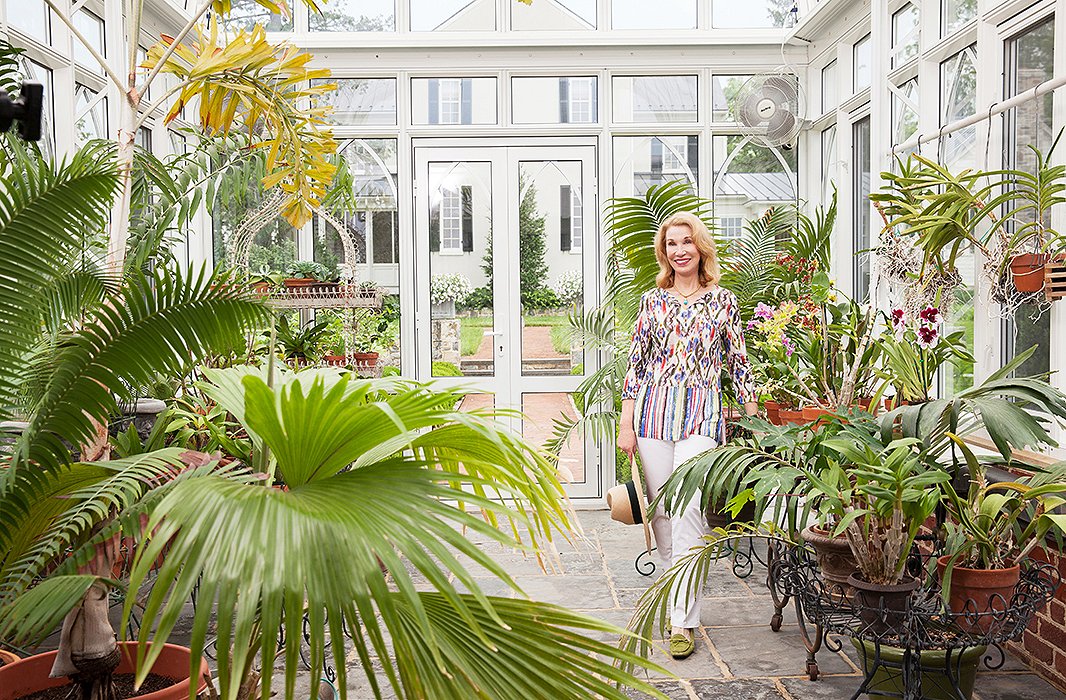
Elizabeth loves downtime in the greenhouse—although, she says, “just like everything else in life, you’re always tidying up—deadheading flowers, watering the wilting things.”

Designed in the shape of a Gothic arch, the greenhouse has smaller arches tracing the glass windows. Boxwood parterres surround the greenhouse, including a row of tall columnar boxwoods that hide the cutting garden in the back.
1. Practicality Be Damned
Gardens reward a little folly and extravagance—those are often the things that bring serious joy. Case in point: Elizabeth’s beloved greenhouse. Years ago she had fallen for a photograph of a Gothic-style greenhouse. Her architect tracked the design down in England when she finally started to plan a garden with a garden designer. “I nearly fainted at the price,” Elizabeth recalls, “but there was nothing else that looked like it anywhere, so I held my nose and wrote the check.”
Rather than making this a dirt-filled work zone, Elizabeth keeps a wealth of potted cycads, palms, and dendrobiums (a variety of orchid) inside her greenhouse. This requires some fuss; the greenhouse’s British designers didn’t anticipate Virginia’s 90-degree temperature peaks, so at the height of summer, the orchids are moved to a shade house. But the expense and the fuss haven’t outweighed the fun. “The greenhouse is the joy of my existence,” Elizabeth says. “If I get home late at night from a long trip, I’ll take a flashlight and go see what’s in bloom.”

The greenhouse is the joy of my existence. If I get home late at night from a long trip, I’ll take a flashlight and go see what’s in bloom.
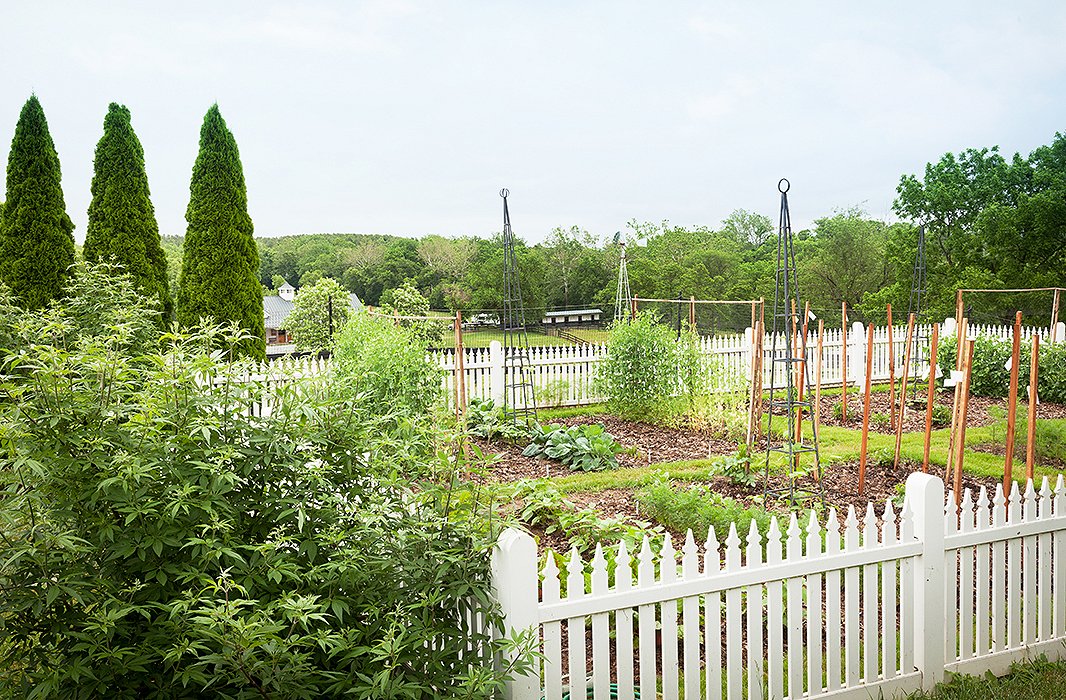
Elizabeth’s land originally had a “ratty-looking garage” in this spot; they tore it down and realized it had been hiding a beautiful view of the Blue Ridge Mountains. Over the garage’s footprint, they planted a vegetable bed.
2. Reimagine the Kitchen Garden
Your vegetable garden doesn’t have to be all virtuous organic kale. Flowers are slowly owning more of the square footage in Elizabeth’s vegetable gardens—as she puts it, “You can always give someone a bouquet of flowers and they’ll be thrilled.” One half acts like a kitchen garden, producing lettuces, Swiss chard, carrots, and climbing green beans, while the other half is devoted to lots and lots of dahlias. To ensure they never run low on flowers, Elizabeth keeps a cutting garden as well. She notes that “cutting gardens are never things of beauty; they’re always straggly,” so hers is tucked behind tall columnar boxwoods.
As she plans each year’s plantings, Elizabeth follows her cravings and constantly adjusts. “You learn over time what’s worth growing,” she says. “We put in an asparagus bed two years ago; we’re going to put in a raspberry patch this spring. When we get inundated with tomatoes or blueberries, I freeze things for the winter.”
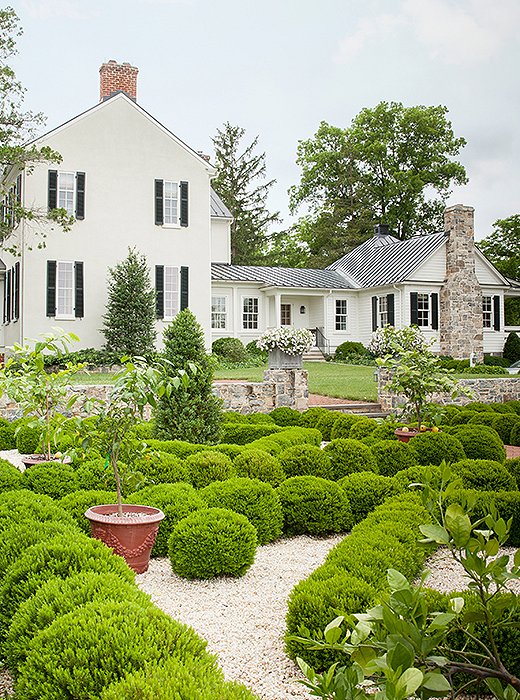
Dotting this parterre are lemon trees, placed in urns for mobility.
3. Opt for a High-Maintenance Look Minus the Work
Gone are the days of full-time gardeners, even in the garden-rich pocket of Virginia where Elizabeth lives, so shortcuts are key. In spite of its formal look, a boxwood parterre is a low-maintenance undertaking. Elizabeth chose what she calls “one of the easiest, best, lowest-maintenance ways” to avoid constant weeding around the boxwood: weedproof plastic sheeting on top of the soil, then gravel on top of that. They just rake the gravel from time to time. What’s more, she says, “a boxwood’s about the most satisfactory bush you could possibly plant—it will grow anywhere, transplant with ease, and you only need to clip about twice a season.” And it’s evergreen to boot.
Elsewhere, you can cut down on weeding time by planting more—as Elizabeth has learned: “Nature hates a vacuum, so if you don’t plant flowers, you’ll get weeds.”

A boxwood’s about the most satisfactory bush you could possibly plant—it will grow anywhere, transplant with ease, and you only need to clip about twice a season.

A moment of rural peace is elevated by a lily pool, with elegant seating to take in the views.
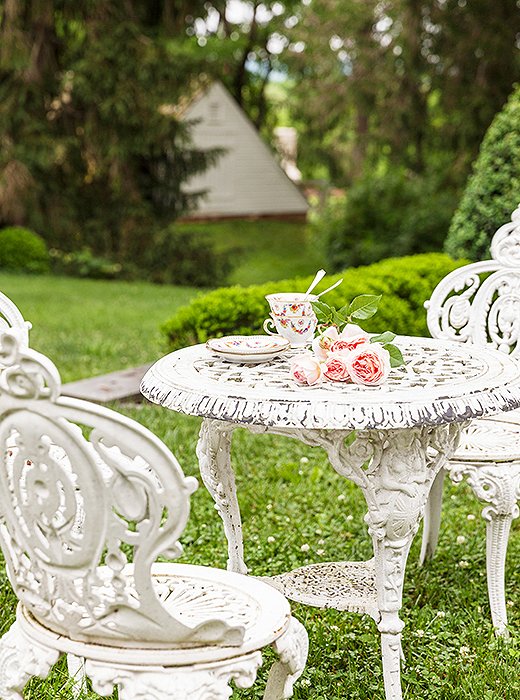
Elizabeth found the 19th-century wrought-iron furniture at an antiques store—it brings a whimsical, leisurely atmosphere.
4. Design Like No One’s Watching
Gardens have plenty of real purpose, yes, but they can also be a place for fantasy. For Elizabeth, being in Virginia horse country in the middle of 100 acres, this can be taken to the extreme. Elizabeth relishes the freedom that comes with rural isolation: “I love having a big space and doing anything I want to do here—that’s a huge luxury.” When it came to installing a lily pool with fish or planting an entire bed of tree peonies or a wall of Asiatic lilies, she simply went for it.
Even for those of us who live just a hedge away from our neighbors, the approach can be the same: Why not put out that zany sculpture or create that koi pond you’ve always dreamt of? Nothing in a garden is forever, so let yourself have some fun.
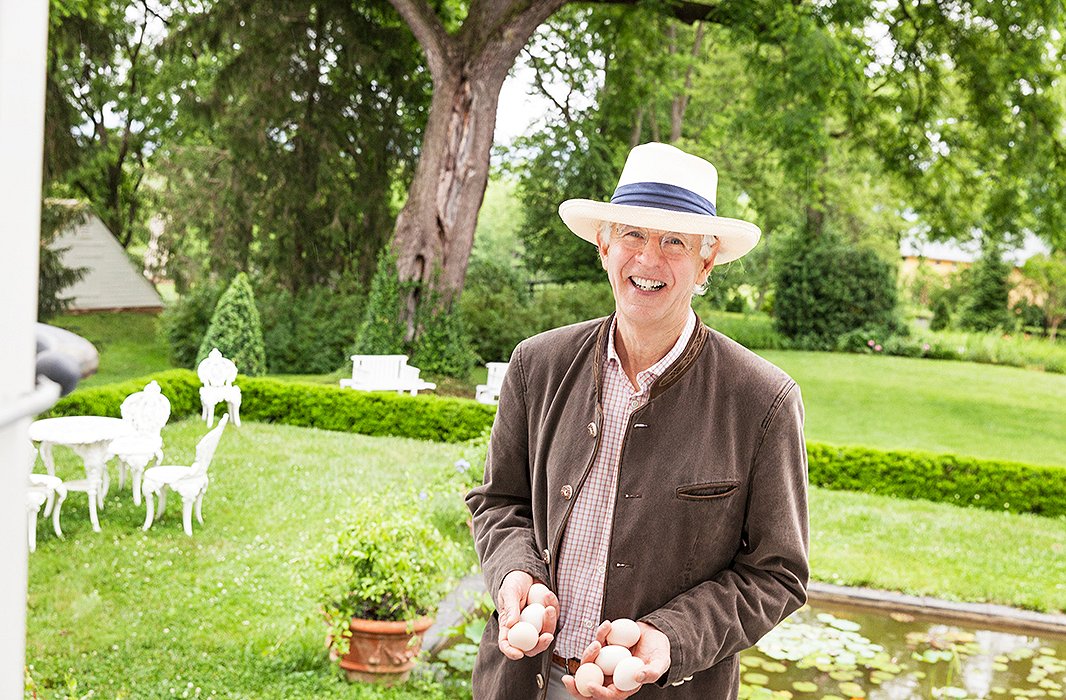
Elizabeth’s husband, John Staelin, after collecting fresh-laid eggs from their chicken coop.
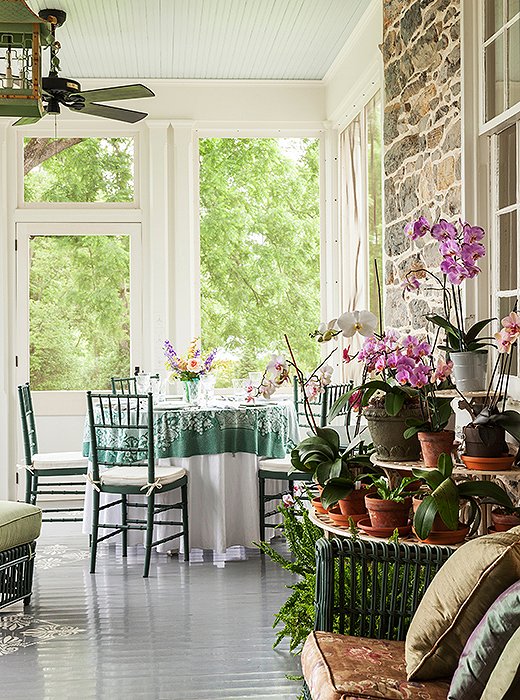
Elizabeth loves to set up meals on the orchid-covered enclosed porch.
5. Celebrate the Fruits of Your Labor
A wonderful payoff of garden work is the parties. Elizabeth is strategic when it comes to location: “We don’t have parties in the greenhouse, because ladies don’t want their hair to turn into frizz balls,” so she’ll serve cocktails by the lily pool and gather everyone on the side porch for dinner.
The party schedule follows that of the garden: Elizabeth throws one when the Asiatic lilies bloom in June, then hosts a dahlia dinner when those blooms peak in late summer. As for cocktails, “I don’t do anything exotic,” she says. “I’m a gin-and-tonic girl. But we’ve got this rogue mint, so we’re always putting that in cocktails.”
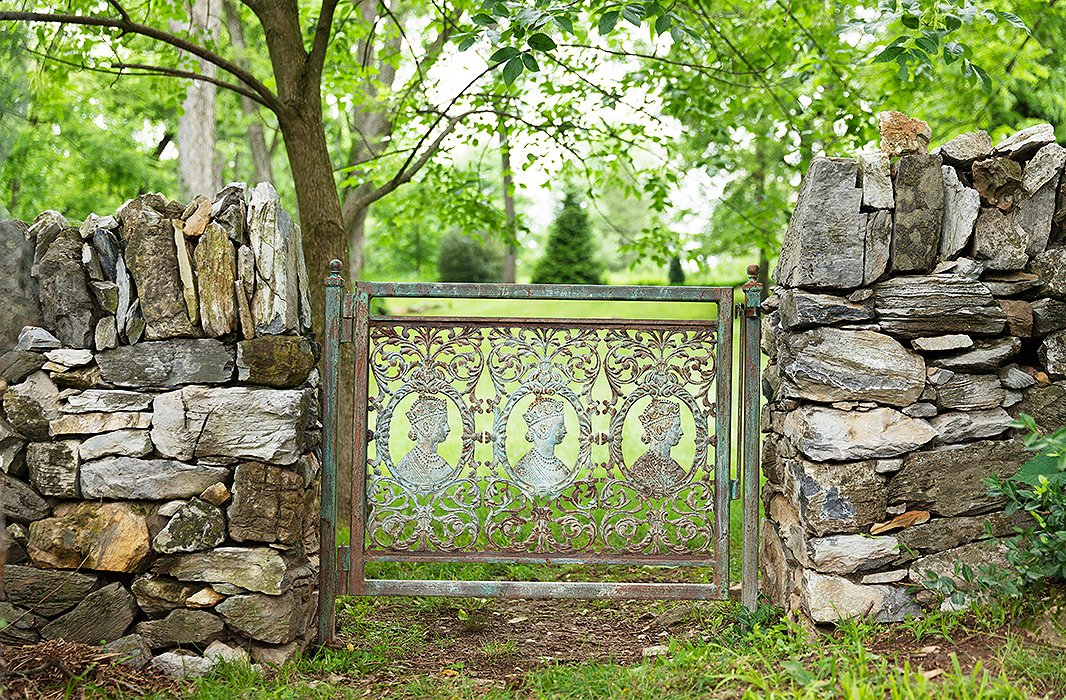
Decades ago when traveling in Udaipur, India, Elizabeth spotted these wrought-iron profiles of the young Queen Victoria. When they created the garden five years ago, she finally installed them.
6. Be Optimistic and Stay the Course
Practiced gardeners have learned to take the long view—the only way to start is to start, and over time, all the trial and error will pay off. As Elizabeth puts it, “People think if you haven’t had a garden forever, it won’t look like anything. But ours is only five years old!”
Trees, of course, require an especially long view. But they reap rich rewards. Elizabeth tells the story of the black walnut trees as evidence: “When we moved here 36 years ago, we ordered 75 black walnut trees to line down to the stable. When they arrived they were literally smaller than pencils. We planted them anyway, and now they’re huge.”
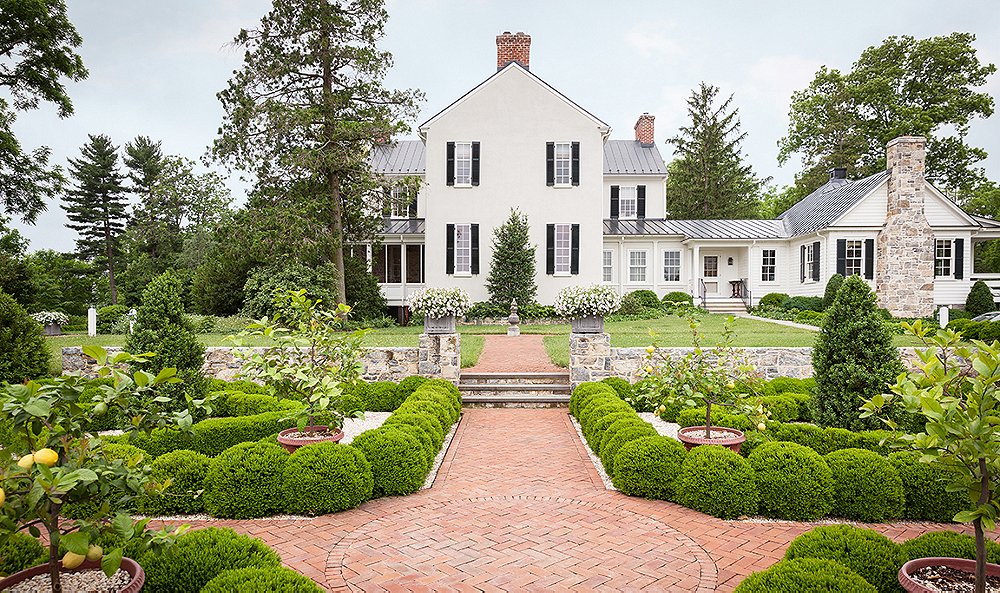
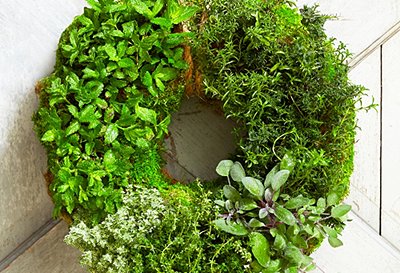

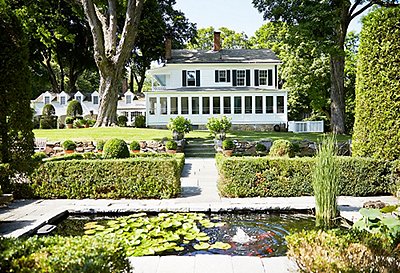
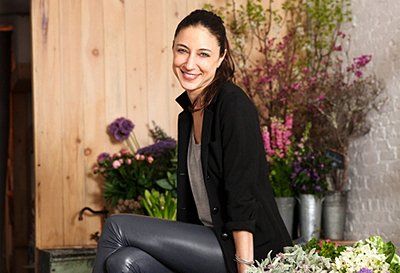
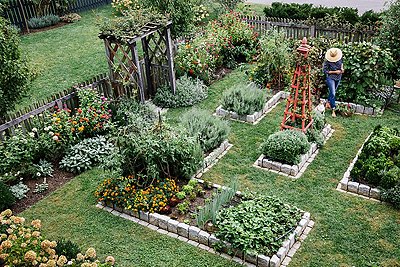

takes my breath away